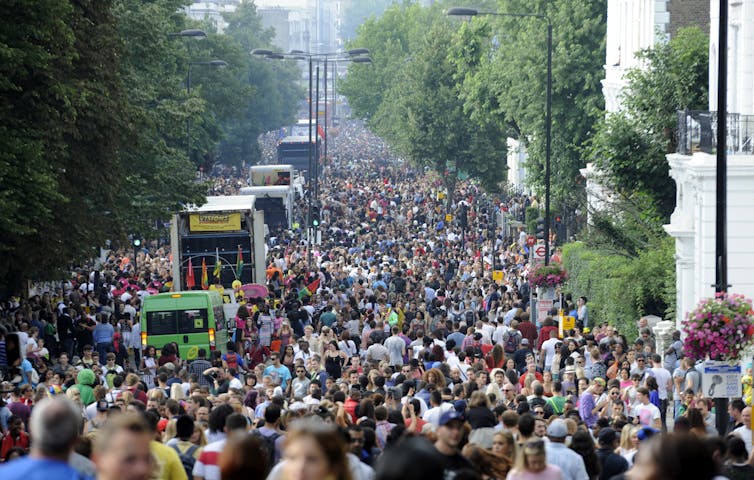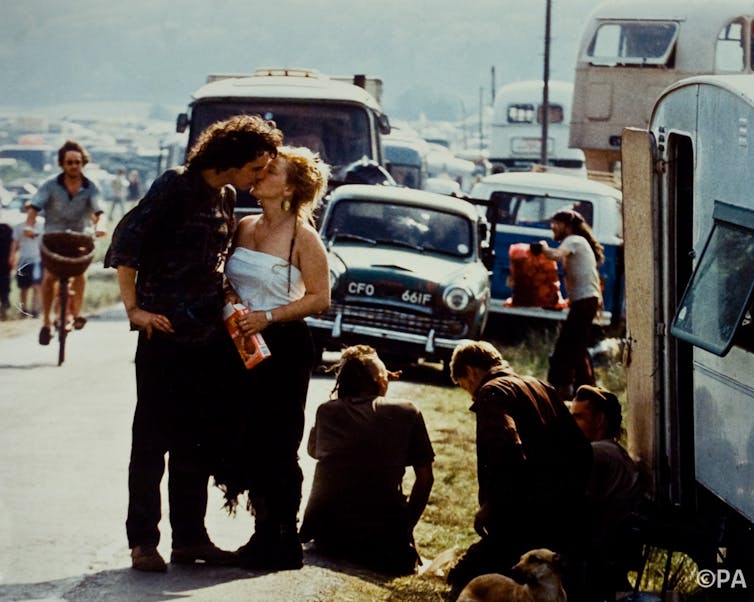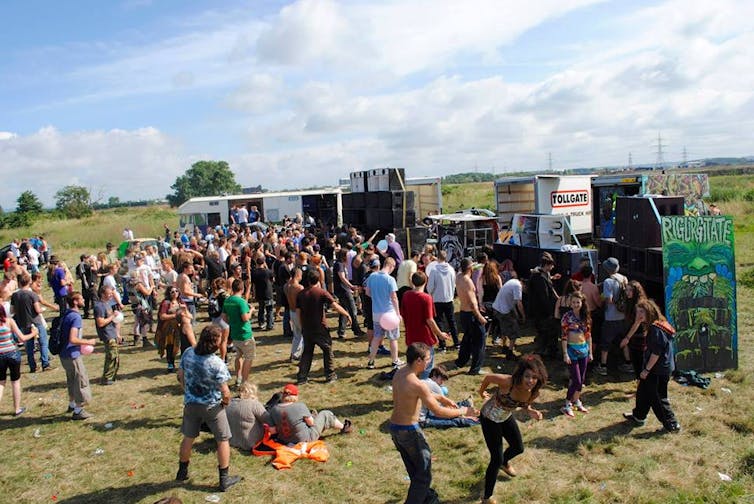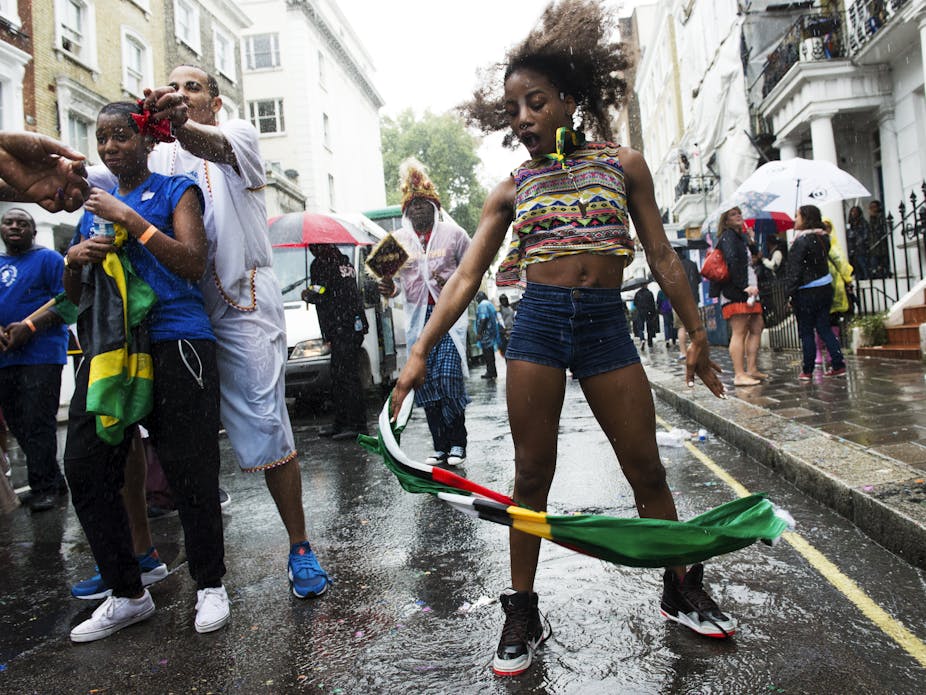About a million people will be gearing themselves up for the mayhem that is Notting Hill Carnival this bank holiday weekend. For two days there will be crowds, booze and pumping music filling the West London streets. Shops board up in anticipation, and locals make a killing by selling Red Stripe on their doorsteps and renting out their toilet.
Although carnival has been a stalwart of the London summer since 1966, day parties such as this are reportedly increasing in popularity, along with festivals. Recent research has shown that the number of clubs in the UK has almost halved in the last ten years and the increase in popularity (and price) of festivals have been touted as one of the reasons why. Given that Notting Hill Carnival is free, I wouldn’t be surprised if it can expect a particularly high influx of cavorting youngsters this year.
But the real age of the free party was the early 90s, and its echoes can certainly still be felt in the (council supported) street parties of today.
These free parties were inherently political. Travellers and ravers united under the umbrella of DIY culture and created a version of the future that was exciting, daring and flew in the face of authority. Music, drugs, politics and audacious opportunism combined to create a cultural phenomenon that continues to resonate.

Hedonism in hard times
Free parties were self-organising, self-sufficient and radical. At the tail end of Thatcher’s hard line government, young and old alike were experimenting with what potential “spaces of resistance” might look like. Eco-activism, road protests, demonstrations, marches, occupations and parties were all part of a time in which opposition, resistance and dissatisfaction were expressed (and contested) spatially. The marginalised joined forces with the chemicalised and history was made.
Described by Steve Redhead in 1993 as “hedonism in hard times”, partying offered a means of escape and a point of liberation for many people. To dance freely, in the open air and without restriction, acted as an antidote to the harsh political climate of the time. People grabbed it with both hands. This new subcultural alliance had the power to rattle the doors of the establishment all the way to Westminster.

Culminating this period of partying, on May Bank Holiday 1992 the biggest free party England has ever seen took place on Castlemorton Common, near Malvern in Worcestershire. In full swing for more than a week, the event marked the peak of rave culture but also signalled its demise. The sight of more than 20,000 party people, pill heads, hippies, crusties, New Age travellers and eco-warriors occupying common land was too much for middle England. The inevitable legislation in the form of The Criminal Justice and Public Order Act followed shortly after.
Castlemorton was not the cause of these measures. It was simply the excuse.
Not-so-free parties
With the end of the free parties, another space for all night raving was desperately needed. Glastonbury in particular played a pivotal role in importing all-night raving into the festival context. The traveller/raver alliance found a home within a licensed event and laid the blueprint for the future.
Since then, the “free party experience” has been co-opted by the festival industry and now contributes significantly to the country’s cultural economy. What was once outlawed has found legitimacy through the market. But in return it was forced to give up its autonomy.

Many festivals (to an extent) look, sound and feel like the free parties of a bygone era. The DIY, hand made character of the free party aesthetic is instantly recognisable nationwide. Over the course of 25 years, the music has not changed dramatically and even the adage Peace Love Unity Respect (PLUR) endures in certain scenes. Virtually every weekend of the summer season you can dance to non-stop electronic dance music in idyllic rural surroundings without the hassle of evading police and without the fear of arrest.
But these days, to experience freedom, you have to buy a ticket. The original free party values of self-actualisation, freedom and community have been adopted by what French sociologists Boltanski and Chiapello call the “new spirit of capitalism’” (2007). Capitalism has absorbed the very vehicle that served as its critic – and we’ve learnt to live with it.
A new generation
But that’s only part of the story.
The original techno rebels and pioneers of rave may have grown up and moved on – some have moved into the festival business – but the thirst for collective dancing in open, rural, free space has not subsided. Don’t tell anyone, but free parties still happen.

The wide media coverage in the early 90s and the moral panic that ensued (fuelled by overblown accounts of out of control youngsters rampaging through the countryside) made for great copy. Now that talk of revolution has died down, press coverage and policing is characteristically low-key. Up and down the country, free parties take place most weekends, particularly when the weather is good. Usually they go unmarked, unnoticed and unreported.
After prolonged austerity measures and in the wake of the general election, change is in the air. There has been a subtle but distinct change in practice both from party-goers and police that signals a turn towards a more vigorous (and potentially disruptive) occupation of open space. The violence that took place during the dispersal of UK Tek 2015 is just one incident that indicates a more hard-line approach from police and local authorities to the recent upsurge in free partying.

The festival scene in the UK continues to , develop and create new lines of flight for its participants. It owes much to the rebels and revolutionaries of rave who dared to do things differently. Interest in the free party scene persists because of its profound impact on youth culture, the media, policing, politics, policy and legislation.
Once again we find ourselves in hard times. How the next generation will choose to combat that through party and protest, if they will use it as a challenge to authorities that attempt to rein them in, remains to be seen. The inherently political element of the free parties of old lends itself particularly well to contemporary times.

